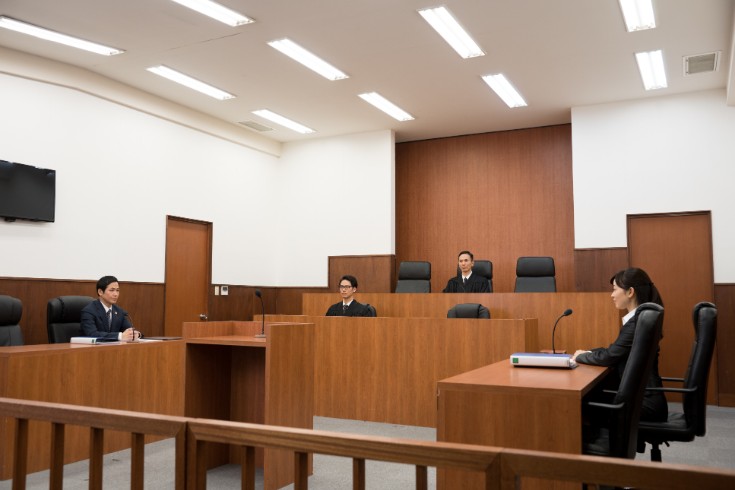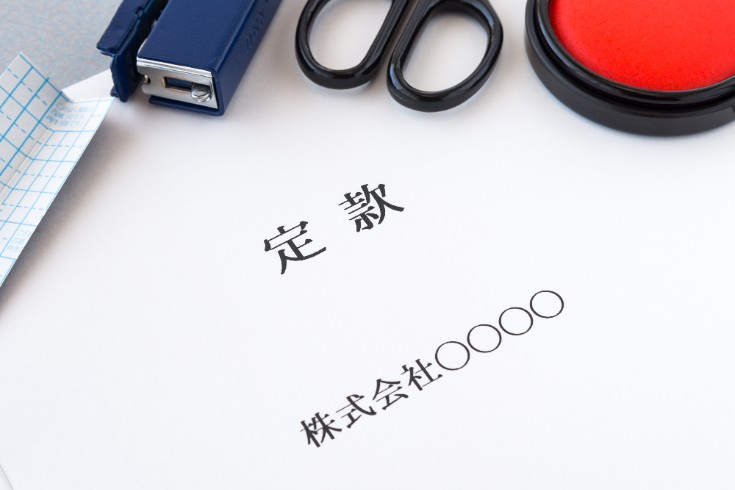Legal Framework for Fixed-Term Contract Workers in Japan: A Guide for Managers

Fixed-term employment contracts are a vital strategic option for many companies, serving to address specific projects, seasonal demands, or to establish probationary periods. These contracts offer significant advantages in securing the necessary workforce with flexibility. However, under Japanese labor law, strict legal regulations are in place to ensure the employment stability of fixed-term contract workers. In particular, the legal framework centered around the Japanese Labor Contract Act stipulates crucial rules that companies must follow regarding the duration of contracts, the conversion to indefinite-term employment contracts, and procedures at the time of contract termination. Operating fixed-term employment contracts without understanding these regulations can lead to unexpected legal disputes and financial risks. A distinctive feature of the Japanese legal system is the tendency to view fixed-term employment contracts not as a series of isolated, one-off agreements but as a continuous employment relationship that can legally evolve with each renewal. With each contract renewal, the worker’s expectation of continued employment gains legal protection, and concurrently, the employer’s discretion regarding contract termination narrows. Therefore, recognizing the initiation of the first contract not as the completion of a static agreement but as the beginning of a relationship with the potential for legal evolution is the first step in risk management. This article aims to provide corporate executives and legal professionals with a detailed explanation of the main legal frameworks related to fixed-term contract workers under Japanese labor law, to assist in understanding and appropriately responding to these regulations.
Duration of Fixed-Term Employment Contracts Under Japanese Law
When entering into a fixed-term employment contract, the first thing to understand is the maximum duration of each contract. Article 14, Paragraph 1 of the Japanese Labor Standards Act stipulates that, in principle, the maximum duration of a single employment contract is three years. This provision is designed to prevent workers from being unfairly bound by long-term contracts . It is important to note that this rule sets a limit for each individual contract and does not restrict the number of times a contract can be renewed .
However, there are several important exceptions to this principle. Firstly, for contracts with workers who possess “high levels of professional knowledge, skills, or experience,” the maximum duration can be extended to five years . Whether a worker falls under this category of “high levels of professional knowledge, etc.” is not determined by the employer’s subjective judgment but by objective criteria established by law. Specifically, this includes individuals with doctoral degrees, medical doctors, attorneys, first-class architects, or system engineers and designers with certain practical experience and annual income (for example, 10.75 million yen or more) . The second exception is for contracts with workers who are 60 years of age or older at the time of contract conclusion, where the maximum duration is also five years . Additionally, contracts that specify the necessary duration for the completion of a particular project, such as dam construction, are permitted to last until the completion of that project .
On the other hand, there is no legal stipulation for a minimum contract period . However, Article 17, Paragraph 2 of the Japanese Labor Contract Act imposes a duty of consideration on employers to avoid repeatedly renewing contracts for periods shorter than necessary in light of the purpose of the contract . This duty of consideration is not merely a goal to strive for. For example, repeatedly renewing extremely short-term contracts, such as one-month contracts, for what is essentially a permanent task, may be considered a factor that establishes a worker’s “reasonable expectation of contract renewal” when the validity of a “dismissal at the end of a contract” is contested. In other words, a contract strategy that seeks short-term flexibility could ultimately increase the legal risks at the time of contract termination, and this must be recognized as a management decision.
Conversion to Permanent Employment Contracts (The “5-Year Rule”) in Japan
One of the most critical regulations in the operation of fixed-term employment contracts is the system known as the “5-Year Rule,” which allows for the conversion to permanent employment contracts. Article 18 of the Japanese Labor Contract Act stipulates that if a worker’s cumulative period of fixed-term employment contracts with the same employer exceeds five years due to repeated renewals, the worker gains the right to apply for conversion to a permanent employment contract (indefinite-term conversion right).
The conditions for this right to arise are, firstly, that the total period of fixed-term employment contracts exceeds five years; secondly, that there has been at least one renewal of the contract during this period; and thirdly, that the calculation of this cumulative period starts from contracts initiated on or after April 1, 2013 (Heisei 25). If a worker exercises this right during a cumulative contract period exceeding five years, the employer is deemed to have accepted the application for conversion and cannot refuse it. The permanent employment contract after conversion begins the day following the expiration of the fixed-term employment contract at the time of application.
The employment conditions after conversion are, in principle, the same as the immediate prior fixed-term employment contract, excluding the provision regarding the contract period (such as job duties, work location, wages, etc.). However, it is possible to change these conditions by making separate provisions in the work rules or other regulations. It is important to note that conversion to a “permanent employment contract” does not necessarily mean employment as a so-called “regular employee.” Companies can establish new employment categories for those converted to indefinite-term contracts. However, when creating differences in treatment between regular employees and those converted, careful system design is required to avoid the risk of being deemed as having unreasonable differences in employment conditions, which is prohibited under Article 8 of the Act on Improvement of Employment Management for Part-Time and Fixed-Term Workers, unless there are rational reasons based on factors such as job responsibilities, scope of responsibility, and whether there are transfers.
There is also a rule regarding interruption periods, known as “cooling,” in the calculation of the cumulative contract period. According to Article 18, Paragraph 2 of the Japanese Labor Contract Act, if ① the previous fixed-term employment contract was less than one year, and there is a gap longer than the period specified by the Ministry of Health, Labour and Welfare based on half of that contract period, or ② if the previous contract period was one year or more, and there is a gap of six months or more before the next contract starts, then the previous contract periods are excluded from the cumulative count and the count is reset.
There are exceptions to this 5-Year Rule. For workers engaged in specific projects as highly specialized professionals under an employer who has received certification for an appropriate employment management plan, or for elderly workers who are employed continuously after retirement, there is a system that prevents the right to apply for indefinite-term conversion from arising for a certain period.
As a management consideration, taking action not to renew a contract just before the five-year mark solely to avoid the emergence of the right to apply for indefinite-term conversion (termination of employment) carries the risk of leading to legal disputes. For such termination to be recognized as valid, it is insufficient to have the sole reason of “avoiding conversion”; there must be objectively reasonable grounds, such as business necessity. Therefore, the 5-Year Rule effectively requires companies to consider the long-term roles of fixed-term contract workers early on and to conduct planned personnel management.
Termination of Fixed-Term Employment Contracts: Dismissal During the Term and Non-Renewal at Expiration
There are two main methods to terminate a fixed-term employment contract in Japan: ‘dismissal’ during the contract term and ‘non-renewal’ upon the contract’s expiration. These two concepts are legally distinct, and the requirements for their validity differ significantly.
Termination During the Contract Period Under Japanese Labor Law
Article 17, Paragraph 1 of the Japanese Labor Contract Act stipulates that an employer cannot terminate an employee during the term of a fixed-term labor contract unless there are unavoidable circumstances that justify such termination. These “unavoidable circumstances” are interpreted much more strictly than the standard for dismissing an employee under an indefinite labor contract, which requires “objectively reasonable grounds that are deemed appropriate according to social norms.” Courts in Japan place significant weight on the promise of employment for the duration of the fixed-term contract and believe that to unilaterally break this promise, there must be grave circumstances that make it difficult to expect the continuation of the contract.
Specifically, circumstances such as the company’s bankruptcy or the destruction of a workplace due to a natural disaster, as well as extremely serious issues on the part of the employee, such as committing a significant crime or becoming completely unable to work for an extended period, may constitute “unavoidable circumstances.” On the other hand, reasons such as mere poor performance, the employee’s lack of ability, or minor violations of work discipline are rarely considered sufficient grounds for termination during the contract period.
Actual cases where termination during the contract period has been deemed valid by the courts are very limited and highlight their exceptional nature. For example, cases where an employee significantly misrepresented their age at the time of hiring for a physically demanding job (Tokyo District Court, March 28, 2008), refused a legitimate transfer order and continued to be absent without leave (Kyoei Security Services case, Tokyo District Court, May 28, 2019), or concealed their absence while working for a competitor (Tokyo District Court, February 26, 2018). Such cases are limited to instances where a significant breach of the duty of good faith by the employee is recognized. Therefore, from a management perspective, it is crucial to recognize that once a fixed-term labor contract is concluded, it is a definitive promise that cannot be terminated during the period unless there are extraordinary circumstances. Careful selection at the hiring stage and setting an appropriate initial contract period are the most important risk management measures.
Termination of Employment Contracts in Japan
“Termination of employment contracts” refers to the non-renewal and consequent termination of a fixed-term labor contract upon its expiration. While in principle, such terminations should be freely executed due to the expiration of the contract term, Article 19 of the Japanese Labor Contract Act codifies the “doctrine of termination of employment contracts,” which has been established as case law, and restricts an employer’s freedom to terminate employment under certain circumstances.
The doctrine of termination of employment contracts applies primarily in the following two cases:
- When fixed-term labor contracts have been repeatedly renewed in the past, and the termination of such contracts can be socially regarded as equivalent to dismissing an employee with an indefinite-term contract (de facto indefinite-term contract type).
- When it is recognized that there is a reasonable basis for the worker to expect the renewal of the fixed-term labor contract upon its expiration (expectation protection type).
In either of these cases, the termination of employment by the employer is invalid if it “lacks objectively reasonable grounds and is not considered appropriate according to social norms.” Whether a worker has a “reasonable expectation” of renewal is determined by considering various factors, such as the permanence of the work, the number of renewals and the total duration of employment, whether the renewal procedures were merely formal, and the presence or absence of suggestions of continued employment from management or supervisors.
Several important court cases serve as references for understanding this doctrine. The Toshiba Yanashiro Plant case (Supreme Court of Japan, July 22, 1974) established the foundation for the doctrine of termination of employment contracts by ruling that the termination of a temporary worker, who had been engaged in permanent tasks under contracts repeatedly renewed for short periods, was invalid as it was substantially equivalent to the dismissal of an indefinite-term contract employee. In the Hitachi Medico case (Supreme Court of Japan, December 4, 1986), while recognizing the worker’s reasonable expectation of renewal, it was decided that the termination of employment was valid due to the high necessity of management, such as the closure of a factory, and the inevitable need for personnel reduction. This indicates that even if there is a reasonable expectation, termination of employment can be recognized if there are overriding objective and reasonable grounds.
A recent case of note is the Hakuhodo case (Fukuoka District Court, March 17, 2020). In this case, despite the contract stating a “renewal limit of 5 years,” the court focused on the long-standing practice of renewals and ruled the termination of employment invalid, recognizing that the worker had a reasonable basis for expecting renewal. This case clearly demonstrates that relying solely on the wording of a contract is insufficient, and that the actual practice of renewals and the behavior of managers can inadvertently create legally protected expectations for workers. Therefore, to manage legal risks associated with termination of employment, it is essential to not only maintain proper contracts but also to tighten the interview and evaluation processes at the time of renewal and to provide appropriate training on communication for supervisors.
Legal Comparison of Mid-Contract Termination and Non-Renewal Under Japanese Employment Law
Understanding the legal differences between “mid-contract termination” and “non-renewal” at the end of a fixed-term employment contract is fundamental for proper labor management. The table below summarizes the key distinctions between the two.
| Comparison Item | Mid-Contract Termination | Non-Renewal |
| Legal Basis | Article 17 of the Japanese Labor Contract Act | Article 19 of the Japanese Labor Contract Act |
| Timing of Occurrence | Before the expiration of the contract period | At the expiration of the contract period |
| Requirements for Validity | Existence of “unavoidable reasons” | Existence of “objectively reasonable grounds” and “socially acceptable appropriateness” |
| Strictness of Legal Standards | Extremely strict | Less strict than mid-contract termination, but judged strictly if the contract has been repeatedly renewed |
| Location of Burden of Proof | Employer must prove “unavoidable reasons” | Employee asserts “reasonable expectation,” followed by the employer proving “reasonable grounds” |
As this comparison makes clear, mid-contract termination is an exceptionally exceptional measure, while non-renewal is structured such that its validity is strictly questioned depending on the reality of contract renewals. Recognizing these differences and accurately understanding the legal requirements demanded in each situation is key to preventing disputes before they arise.
Conclusion
When employing fixed-term contract workers under Japanese labor law, it is essential to deeply understand the strict regulations behind the flexibility offered. As outlined in this article, the core elements that companies must comply with include the maximum contract period, the rule for conversion to an indefinite-term labor contract after exceeding a total of five years, and the very different legal disciplines of “dismissal during the contract period” and “non-renewal” at the end of the contract. In particular, the fact that dismissal during the contract period is subject to such a high hurdle that it is nearly impossible, and that the easy repetition of contract renewals can unintentionally create a legal situation that makes non-renewal difficult, represents a significant risk factor in management. Effective utilization of fixed-term contract workers does not end with simply signing a properly drafted employment contract. It requires continuous management activities, including strategic personnel planning with a long-term perspective, the establishment of clear and consistent internal processes for renewal and termination, and appropriate education for management.
Monolith Law Office has a proven track record of providing extensive advice on all aspects of Japanese labor law, including issues related to fixed-term labor contracts as discussed in this article, to a diverse range of clients both domestically and internationally. Our firm’s strength lies in the deep expertise in the Japanese legal system, complemented by the presence of attorneys who are English speakers, including those with foreign legal qualifications. This enables us to accurately understand the unique concerns and backgrounds of clients in an international business environment and provide clear and practical legal support without language barriers. Whether it’s managing the employment of fixed-term contract workers, establishing work regulations, or responding to labor disputes, we robustly support your business from a legal standpoint at every stage.
Category: General Corporate





















